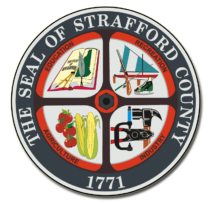The legal process is unfamiliar to many people. Many people who become part of the court process did not have a chance to learn about it beforehand. Because, for some reason, you or a family member is involved in a court case, there are some terms you will want to know.
Witness – A witness is anybody who is called to testify in court. “Witness” does not usually mean “eye witness”, as many crimes do not have eyewitnesses. People are called to testify because they have information about a particular matter.
Victim – The victim of a crime is usually the lead witness in a trial. The victim is not the person pressing charges; the state has brought the charges and the victim is a witness in the state’s case.
Defendant – The defendant is the person who has been charged with a crime.
Grand Jury – A felony case sent to Superior Court is first presented to the grand jury: a group of 12 to 23 citizens. The County Attorney’s Office presents the evidence in closed session. The defendant and the victim are not present.
Indictment – If twelve or more members of the grand jury believe that the defendant may have committed a crime, the defendant will be formally charged. This formal charge is called an “indictment”.
Arraignment – The defendant comes before the judge to enter a plea of not guilty and the issue of bail is reviewed. A plea of not guilty is almost always taken at this early stage, so the defense attorney has time to go over the case with his/her client. If the defendant wishes to change the plea to guilty at a later day, he/she may. Depending on where the charge is filed, the defendant can be arraigned in both circuit and superior court. After the arrest, the district court schedules arraignment. After indictment, the superior court schedules arraignment.
Bail – Bail is not meant to be a punishment, it is meant to keep the community safe and ensure the defendant’s appearance at court. Seldom is a suspect incarcerated while awaiting trial. An amount of Personal Recognizance, Cash, or Surety is set by the court to ensure a defendant’s appearance at future court hearings.
Motion – A motion is a written request from a lawyer to a judge. Motions can be made from the state or the defense; motion to continue trial, motion for discovery, motion for deposition (interview with witness).
Types of Hearings
After a motion is made, there is usually a hearing in front of the judge. At a hearing the state and the defense tell us why they are making the request or why they oppose it. A judge then makes a decision, called a ruling, or court order.
Pretrial Hearing – A pretrial hearing is scheduled a few weeks after the charge is brought – and again two weeks prior to trial. The prosecutor and defense attorney go before the judge to say if they are ready for trial, and how they expect the trial to last. A trial date is then set. If a defendant wishes to plead guilty, the judge is advised at the pretrial hearing and a sentencing date is scheduled.
Trial – All evidence, information and witness testimony is presented during trial. In a jury trial, all twelve jurors must agree on a verdict of guilty or not guilty. If the verdict is not guilty, the defendant has been acquitted and is released. If the verdict is guilty, the judge will sentence the defendant at a later date. When jurors cannot agree on a verdict it is called a “hung jury”. The case is deadlocked and may result in a new trial.
Plea Negotiation Hearing – By policy, a plea offer is made in every case. If agreed to, the defendant pleads guilty and is given a sentence, which has been negotiated by the state and defense. A trial is avoided in this situation. A judge must approve negotiated sentences. Victims are always advised before offers are made.

